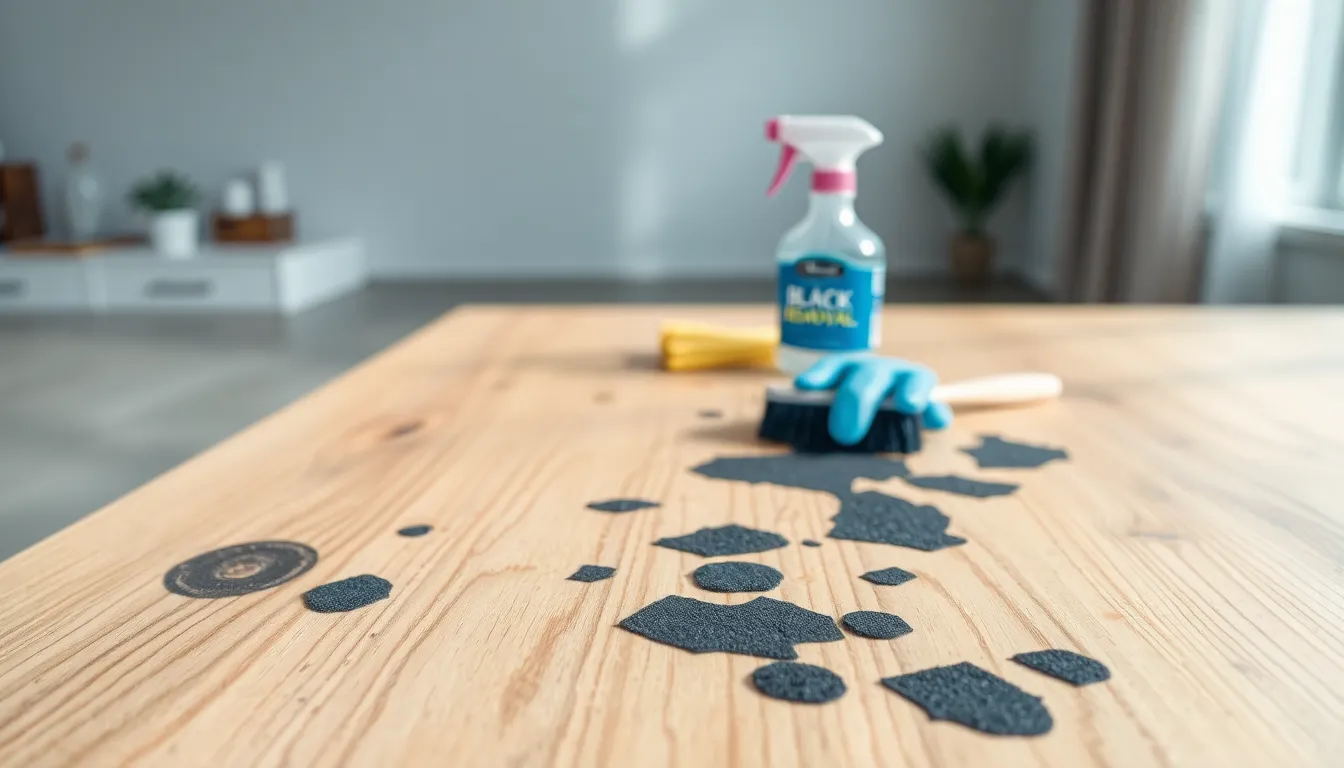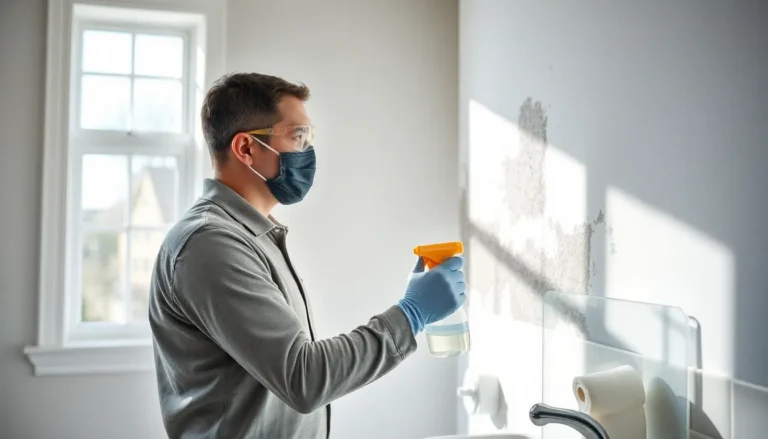Black mold on wood is the unwelcome house guest that just won’t leave. Imagine coming home to find it lurking in your beautiful furniture or cherished wooden beams. Not only is it unsightly, but it can also pose health risks. But fret not. With the right approach, you can evict this moody intruder from your home. In this guide, we’ll unravel the secrets of tackling black mold head-on, ensuring your wood stays as fabulous as it deserves to be.
Table of Contents
ToggleUnderstanding Black Mold

What Is Black Mold?
Black mold, or Stachybotrys chartarum, is a type of fungus that thrives in moist, humid environments, often appearing as black or dark green spots. It’s a sneaky mold, often hiding in places not readily visible, such as behind walls and under floors. The reproduction of black mold occurs via spores, which can float through the air and invade unsuspecting homes.
Health Risks Associated With Black Mold
This mold isn’t just a nuisance: it can lead to a variety of health issues. Exposure may cause respiratory problems, allergic reactions, and even more severe conditions in immunocompromised individuals. Symptoms might include sneezing, headaches, or skin rashes. It turns out your home’s charming wood accents could be contributing to something far less charming if left untreated.
Identifying Black Mold On Wood
Signs Of Black Mold Infestation
Identifying black mold isn’t always straightforward. Look for visible signs like dark spots or a musty odor. Pay attention to areas where water is often present or has been recently present. If the wood feels damp, crumbling, or harbors a lingering smell, those could be red flags.
Common Areas For Mold Growth
Certain areas in a home are prime real estate for black mold. Think bathrooms, kitchens, and basements. Areas with repetitive water exposure or poor ventilation are especially susceptible. If you find wood near these zones, it’s wise to keep an eye out to catch any toxic growth early.
Essential Safety Precautions
Protective Gear To Use
Before embarking on a black mold removal mission, don protective gear. Think gloves, goggles, and a mask to shield against spores and irritation. Trust us: your lungs will thank you later.
Ventilation And Containment
Ensure the area is well-ventilated. Open windows and doors to allow fresh air circulation. Contain the infected area to prevent spores from spreading to other parts of your home. Using plastic sheeting can help create a barrier, making your mold-removal adventure a safer one.
Effective Methods To Remove Black Mold
Using Vinegar And Baking Soda
For a natural approach, vinegar and baking soda are your best pals. Spray undiluted white vinegar directly onto the moldy wood and let it sit for an hour. Sprinkle baking soda on top, scrub gently, then rinse. This combination not only removes mold effectively but also leaves a fresh scent behind.
Commercial Mold Removal Products
If DIY doesn’t suit the bill, consider commercial mold removal products. These often contain stronger chemicals formulated specifically to combat mold. Always follow the manufacturer’s instructions and ensure proper ventilation during use to protect your health.
Professional Mold Remediation Services
For severe infestations, calling in the professionals may be your best bet. These experts have the right tools and knowledge to get rid of mold safely and effectively. While this can come with a price, the peace of mind often justifies the cost.
Post-Removal Strategies
Preventing Future Mold Growth
Once the mold is tackled, focus on prevention. Keep wood surfaces dry and well-ventilated, especially in high humidity areas. Regularly inspect your home for leaks or dampness that could encourage unwanted fungal guests.
Regular Maintenance Tips
Regular cleaning and maintenance can hinder mold’s return. Dust and clean wood surfaces frequently. Consider investing in a dehumidifier to keep humidity levels in check. Staying proactive can save you from a future mold catastrophe.
When To Seek Professional Help
Signs You Need Expert Assistance
If you’ve done your best but mold keeps resurfacing, it’s time to consider professional help. Signs such as extensive damage, an overwhelming odor, or health symptoms persisting even after cleanup are good indicators that experts should step in.
Cost Considerations For Professional Services
The cost of professional mold remediation can vary widely, depending on the extent of the problem and location. Factors such as inspection fees, necessary repairs, and labor costs can all come into play. Before committing, it’s wise to gather quotes and check reviews to ensure the best choice for your home.



